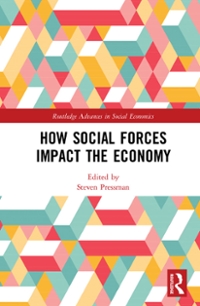Question
Statistics Canada just released the unemployment rate for the month of January 2023 and it remains at 5% with no change from last month. Please
Statistics Canada just released the unemployment rate for the month of January 2023 and it remains at 5% with no change from last month.
Please read the following article and watch the included video in the second publication from The Financial Post and do the following:
- Provide a list of at least 5 bullets with the most important statements and facts related to the 3 macroeconomic goals
- close with a personal statement and opinion based on the available information and support your argument
Unemployment remains near record low, while participation increases
https://www150.statcan.gc.ca/n1/daily-quotidien/230210/dq230210a-eng.htm?indid=3587-2&indgeo=0
The unemployment rate held steady at5.0% in January, just shy of the record-low4.9% observed in June and July2022. The total number of unemployed people stood at1.0million, similar to the level observed since the summer of2022.
Among people aged25to54, the unemployment rate edged down (-0.1percentage point to4.1%) in January, while it increased for people aged55and older (+0.2percentage points to4.5%) and was little changed for youth aged15to24. On a year-over-year basis, the unemployment rate was down among all major demographic groups, with youth seeing the largest decline (-3.0percentage points to9.5%).
The unemployment rate trended down for most core-aged racialized population groups in the12months to January, but remained higher than the national average for several groups. The unemployment rate in January2023remained highest among Arab (8.1%) and Korean (8.0%) Canadians, followed by Black (7.2%) and West Asian (5.8%) Canadians (three-month moving averages; not seasonally adjusted).
The majority (63.9%) of unemployed people in January had been unemployed for a relatively short amount of timebetween1and13weeks. Long-term unemployment (the proportion of the unemployed who had been out of work continuously unemployed for27weeks or more) was15.8%, down from19.9% in January2022.
The size of the labour force has continued to grow. In January, an additional153,000(+0.7%) people joined the labour force, boosting the participation rate to65.7% (+0.3percentage points). The participation rate had recovered to its pre-pandemic level (65.9%) in September2021before trending slightly downward and reaching65.3% in June2022. In recent monthsfrom July2022to January2023the labour force grew by336,000(+1.6%), outpacing population growth. The participation rate was up across virtually all major demographic groups over this period, particularly among core-aged women and people aged55to64.
'A challenge for the Bank of Canada': What economists say about the blockbuster jobs report
The majority of the gains were full-time in the private sector
Author of the article:
Gigi Suhanic
Published Feb 10, 20237 minute read
https://financialpost.com/news/economy/jobs-report-economists-reaction(WATCH VIDEO)
The Canadian jobs market posted another blockbuster result,gaining 150,000 positionsin January, Statistics Canada said on Feb. 10, outpacing analysts' estimates for an increase of 15,000.
The jobs report was "even more impressive," said James Orlando, senior economist at TD Economics, because the "gains were concentrated in full-time jobs in the private sector."
Step by Step Solution
There are 3 Steps involved in it
Step: 1

Get Instant Access to Expert-Tailored Solutions
See step-by-step solutions with expert insights and AI powered tools for academic success
Step: 2

Step: 3

Ace Your Homework with AI
Get the answers you need in no time with our AI-driven, step-by-step assistance
Get Started


